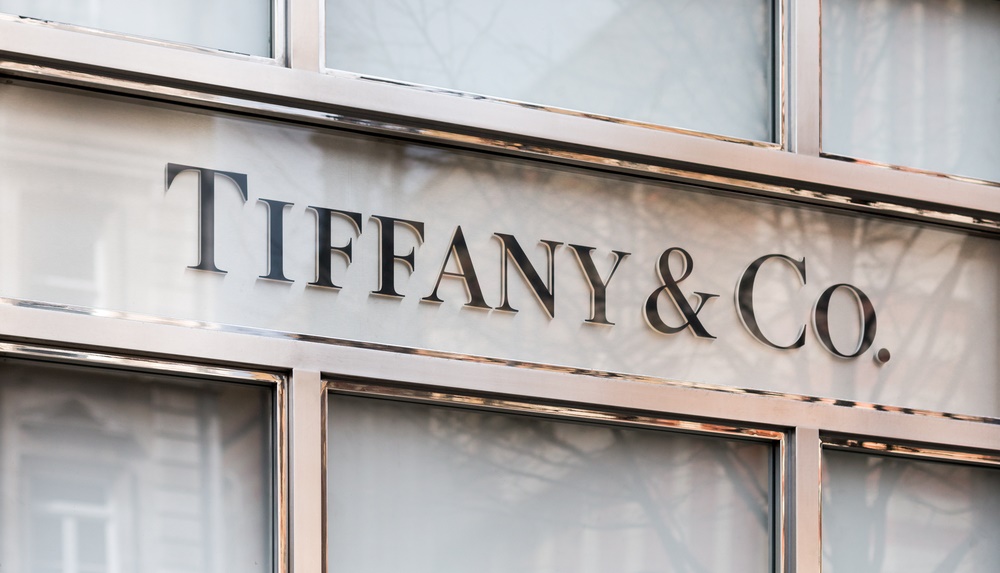The business of luxury goods retailing has been hit by a “perfect storm” of global macro headwinds over the last 2-3 years, despite the absence of a U.S. or European recession. According to Morningstar, luxury retailers’ stock prices are down by over 2% annualized over the last three years, underperforming the S&P 500 by more than 12% on an annualized basis. Even Tiffany & Co (TIF), one of the world’s most well-known luxury jewelers and brands, has not been immune. TIF’s stock price peaked in November 2014 at $108 a share. Today, it is trading at around $72 a share. Over the last three years, TIF is down by about 1.6% annualized, just slightly outperforming its luxury retailing peers.
In particular, the bear market in TIF and other luxury retailers have been plagued by the following headwinds:
• A strong dollar which has reduced international tourist traffic and spending in many U.S. gateway cities, particularly New York City (on the corner of Fifth Avenue and 57th Street) where TIF has its biggest store and which contributes 9% of the firm’s revenues (note that TIF has over 300 stores around the world);
• An ongoing anti-graft crackdown on Chinese government officials, which has reduced Chinese luxury retail spending across the board; same-store sales at TIF’s Asia-Pacific ex. Japan region (which makes up 24% of worldwide sales) were down by 9% on a constant-currency basis during the most recent quarter;
• A two-year bear market in crude oil prices, leading to a 22% same-store sales decline in the United Arab Emirates (UAE) region, where TIF has five stores.
For the most recent Q2 2016 quarter (ending July 31, 2016), TIF reported EPS of $0.84, beating expectations of $0.72, due to gross margin expansion and a decline in SG&A expenses. For the full fiscal year 2016 (ending January 31, 2017), however, management remains cautious and is still expecting low-single digits decline in sales and mid-single digits decline in EPS.
Ultimately, I believe these global macro headwinds are transient in nature. TIF is still making positive economic returns in today’s environment, and should thrive once the global macro headwinds dissipate or turn into global macro tailwinds.
TIF has a market value of $9.0 billion and a dividend yield of 2.5%. I find TIF to be a compelling long-term investment for three reasons.
1. TIF’s current “perfect storm” of global macro headwinds will turn into tailwinds in 2017
The U.S. dollar index actually peaked in December 2015 and has since declined by 4%. Just as important, the price of crude oil is up by more than 60% since its February low. On the margin, the recent weakness in the U.S. dollar and the accompanying strength in oil prices should boost European/Japanese luxury retail and tourist spending, along with luxury retail spending in the UAE, respectively. Indeed, while FY 2016 EPS is projected to decline by mid-single digits (from $3.83 ex. charges in FY 2015 EPS) to a consensus of $3.60, consensus estimates for FY 2017 EPS is around $3.90, an 8% rise from the current fiscal year.
By far the most important determinant of TIF’s future growth is the rise of the Chinese consumer. Sales in the Asia Pacific ex. Japan region has been weak since the acceleration of the Chinese government’s anti-graft crackdown in 2014 and the unexpected devaluation of the Chinese currency, the RMB, in August 2015. Fortunately, the negative effects of these two events are waning. Underpinned by double-digit increases in retail sales, Tiffany’s mainland Chinese same-store sales remain positive (much of the Asia-Pacific decline centered on TIF’s nine Hong Kong stores); moreover, since peaking at 6.7 RMB in early July, the U.S. dollar has stabilized against the Chinese RMB. With Chinese FOREX reserves having stabilized, I do not expect the Chinese RMB devalue again in the near future. As such, Chinese consumers should continue to be a strong driver of TIF’s growth in the long run.
2. TIF is still one of the world’s most well-known and valuable luxury retail brands
It is no secret that a substantial portion of the world’s jewelry buyers will pay a premium for the “Tiffany brand,” as exemplified by TIF’s gross margins of 61%, versus Signet’s gross margins of 37%, for example. 180 years after its founding, the company’s brand name is as strong as ever, particularly with luxury and aspirational consumers in the Asia-Pacific region. TIF is ranked in the top 20 of North America’s most valuable retail brands by Interbrand; it also ranks as the number one digital brand in the jewelry and watch category by the industry intelligence firm L2. TIF’s long-time history and brand name recognition in the diamond industry also allows the firm to directly source most of their diamonds from miners (while other jewelers have to work through wholesalers), which is accretive to TIF’s gross margins.
3. TIF is undervalued
Excluding its 2013 fiscal year results (when TIF paid $449 million to Swatch in an arbitration suit), TIF’s post-global-financial-crisis P/E ratio averaged 21.4. Today, TIF is trading at a 12-month forward P/E ratio of 18.6, about 13% below its post-global-financial-crisis multiple. As TIF resumes its growth path, I expect its P/E to recover to at least 21.4. Applying a P/E of 21.4 to the $3.90 consensus estimate for the fiscal year ending January 31, 2018, I get a price target of $83 a share, equivalent to a conservative projected gain of 16% in TIF’s stock price by the end of the 2017 fiscal year.
Disclosure: Neither I nor does my firm, CB Capital Partners hold any shares in TIF.
Henry To, CFA, CAIA, FRM is Partner & Chief Investment Officer at CB Capital Partners. Established in 2001, CB Capital Partners is a global financial advisory and investment firm headquartered in Newport Beach, California, with an office in Dallas, Texas, Shanghai, China and an affiliate office in Mumbai, India. Visit http://www.cbcapital.com and http://www.cbcapitalresearch.com for more information.




